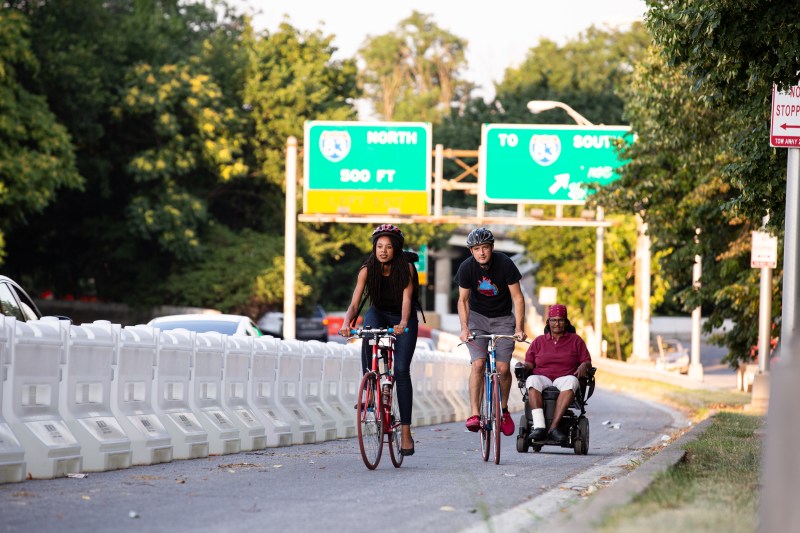Until last month, walking along Druid Lake Park Drive in Baltimore's Reservoir Hill neighborhood was an extreme sport.
With as many as five car lanes, few signalized crossings, and narrow, inaccessible sidewalks, this road was made for driving. Reservoir Hill is a predominantly black neighborhood where half of households don't own cars. But to walk to jobs or stores in neighboring Remington, people had to hike through grass and squeeze next to speeding motorists on the 28th Street Bridge. Crossing the street to reach Druid Lake Park took courage.
Able-bodied people could walk on Druid Lake Park Drive, "but you were taking your life into your hands," said Jed Weeks of the bike advocacy group Bikemore. "If you were a user of any type of mobility device you were just screwed."
Now the trip is much safer for people walking, biking, or using a wheelchair. Last month, the city installed large plastic Jersey barriers filled with water for ballast, converting one of the traffic lanes to a path for pedestrians and cyclists.
The barriers won't win any design competitions, but they get the job done.

The path runs one mile along Druid Lake Park Drive and extends a few blocks north along Sisson Street, connecting to the Jones Falls Trail in Druid Hill Park.
In the coming weeks, the city will be working with Bikemore and other local organizations to dress up the plastic barriers with art.
The project cost about $500,000, according to Bikemore. It's the main project supported by Baltimore's "Big Jump" grant from PeopleforBikes, which assists the city with projects to boost biking and walking over three years.
Council Member Leon Pinkett, III, who lives in Reservoir Hill, championed the new path.
The path will be in place for at least a year before the city evaluates the impact and decides whether to keep it.
"If it works, it’s going to be there until we come up with a permanent solution," Weeks told Streetsblog.






